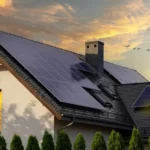India’s Metal Production Gets Boost With Adani’s $1.2 Bn Copper Plant

Adani wants to become a global leader in the copper business, leveraging the Adani Group’s strong position in resource trading, logistics, renewable power and infrastructure
The Gautam Adani-led group is currently constructing the world’s largest single-location copper manufacturing plant in Mundra, Gujarat. This project, with an estimated cost of USD 1.2 billion, aims to reduce India’s dependency on copper imports and facilitate the nation’s energy transition. According to Vinay Prakash, Managing Director of Kutch Copper., the first phase of the facility is set to commence operations by the end of March, with a full-scale production capacity of 1 million metric tonnes expected to be achieved by FY29.
India’s endeavour to bolster copper production aligns with global trends, as various countries, including China, are rapidly expanding their copper output. The importance of copper in advancing towards renewable energy sources such as electric vehicles, solar photovoltaics, wind powerand batteries cannot be overstated.
Kutch Copper., a subsidiary of Adani Enterprises., is spearheading this greenfield copper refinery project, designed to produce refined copper at a capacity of 1 million metric tonnes per year in two phases. Financial closure for Phase 1, with a capacity of 0.5 million metric tonnes per year, was achieved through a syndicated club loan in June 2022.
Prakash emphasised Adani’s ambition to become a global leader in the copper industry by leveraging its expertise in resource trading, logistics, renewable energy and infrastructure. He noted that India’s per capita copper consumption is significantly lower than the global average and anticipates a doubling of domestic demand by 2030 due to the nation’s shift towards clean energy systems and the proliferation of electric vehicles.
Copper, ranking third among industrial metals after steel and aluminium, is witnessing increased demand, particularly from burgeoning sectors like renewable energy, telecommunications and electric vehicles. However, India’s domestic copper production has struggled to meet this demand, leading to a surge in copper imports over the past five years.
In FY23, India imported a record 1,81,000 metric tonnes of copper while exports plunged to a historic low of 30,000 metric tonnes. Domestic consumption stood at 7,50,000 metric tonnes in FY23 and is projected to reach 1.7 million metric tonnes by 2027, driven by demand from the green energy industry. Adani Group’s venture into copper manufacturing is a natural extension of its existing businesses, encompassing trading, mining, logistics, infrastructure and manufacturing. The strategic location of the plant on the West Coast provides Adani with a competitive edge in serving both domestic and international markets.
The integrated complex will not only produce copper cathodes and rods but also valuable by-products such as gold, silver, selenium, platinum, sulfuric acid and phosphoric acid. Phase I of the project aims to produce 500,000 metric tonnes of refined copper annually, with expansion plans to double the capacity in Phase II. The construction of the copper complex is nearing completion, with operations expected to commence in 2024. Adani’s investment in copper manufacturing coincides with Vedanta’s efforts to reopen a long-idle copper plant in Tuticorin, Tamil Nadu.
Prakash emphasised the company’s commitment to sustainability, with plans to minimise greenhouse gas emissions and explore renewable energy sources. Long-term supply agreements for key raw materials, along with an integrated value chain advantage, position Kutch Copper as a sustainable and cost-effective copper producer. The plant’s design incorporates sustainable solutions to ensure zero liquid discharge and explores opportunities for utilising by-products in various industries. As global copper production remains concentrated, India’s entry into the market is expected to contribute to a more balanced demand-supply scenario in the medium term.




















































































































































































































































































































































































































































































































































































































































































































































































































































